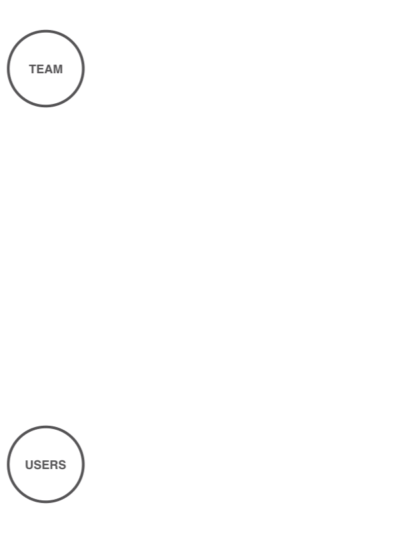Establishing a UXR Infrastructure
Challenge:
How do I established an infrastructure and subsequent culture for UXR in an organization where they currently do not exist? Further, how do I then continually evolve that infrastructure and culture once they are established
“UX Researcher’s Fallacy: My job is to learn about end-users. Truth: My job is to help my team learn about end-users.”
I came across this quote back in 2011 and it fundamentally changed my philosophy and subsequent approach to UXR. Instead of seeing myself as some kind of middleman translator or go-to guru on user’s needs I began to see myself as an engineer responsible for constructing a system that brought the end-user closer to my team. A window, if you will, through which team members could observe and learn about their end-users. Further, for this system to be truly effective, it must be structured in a way that was relatable – meaning, it had to be simple enough that team members with no research experience could participate and build their own research skills.
Being a UX practitioner in EdTech comes with its challenges. Not only are you responsible for designing products used for the facilitation, demonstration, and assessment of learning in schools around the globe you more than likely work for an organization that doesn’t place a strong emphasis on UX culture in the first place. Suffice it to say, figuring out how to establish a UXR focused infrastructure and culture where they are amiss can be a daunting task. I mean, where do you start?
Well, let me introduce to you my 5-point framework for building a UXR infrastructure and culture.
5-Point Framework
Much like oil, gold, diamonds, etc. I see data as something that must be extracted and processed before becoming anything useful. Therefore, to have useful data, it is important to focus on the overall infrastructure responsible for bringing said data to fruition. The framework breaks this infrastructure down into 5 areas of focus:
Collect
Aggregate
Analyze
Report
Track
1. Collect
Garbage in, garbage out.
By focusing on the mechanisms used to collect data (i.e. methods and tools), one can insure that the data entering the system is of the highest quality and collected in a way that makes processing easier.
2. Aggregate
Prepping for analysis.
By focusing on the mechanisms used to get data into a centralized location (i.e. spreadsheets, video grids, etc.), one can insure that collected data can be analyzed more efficiently. Further, because some organizations have multiple teams dedicated to collecting data, it’s important to focus on how all those data streams get aggregated together.
3. Analyze
Extracting meaning.
By focusing on the mechanism, here, really techniques, used to extract meaning out of aggregated data (i.e. qualitative data coding, task analysis, etc.), one can insure that findings from research are transformed into a medium suitable to a number of different reporting formats.
4. Report
Making findings digestible.
By focusing on the mechanisms, here, really formats, used to present findings (i.e. videos, slides, executive summaries, etc.), one can insure that any reported information is consumable no matter the audience.
5. Track
Action and transparency.
By focusing on the mechanisms used to track where findings came from and if they’ve been addressed, one can insure that processed data result in tangible action (i.e. development, redesigns, etc.) that is transparent to the larger organization.
